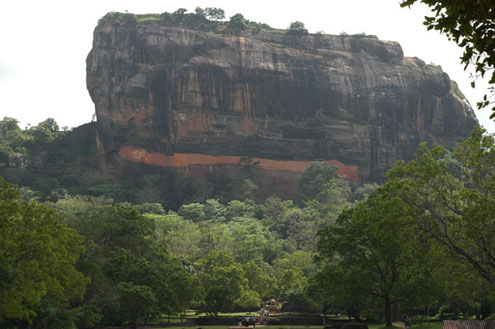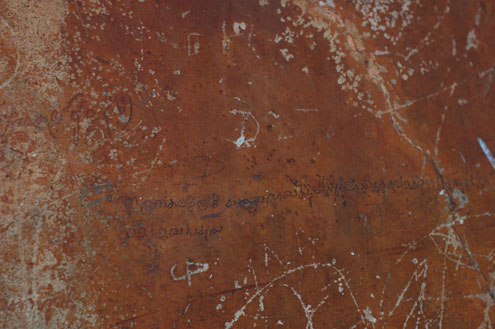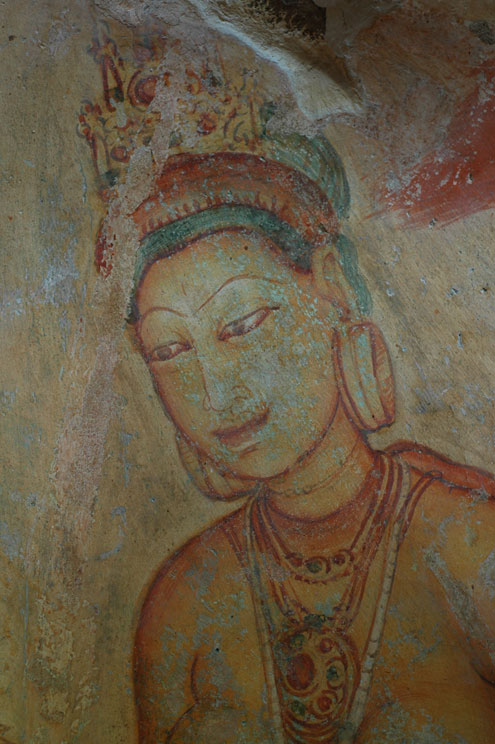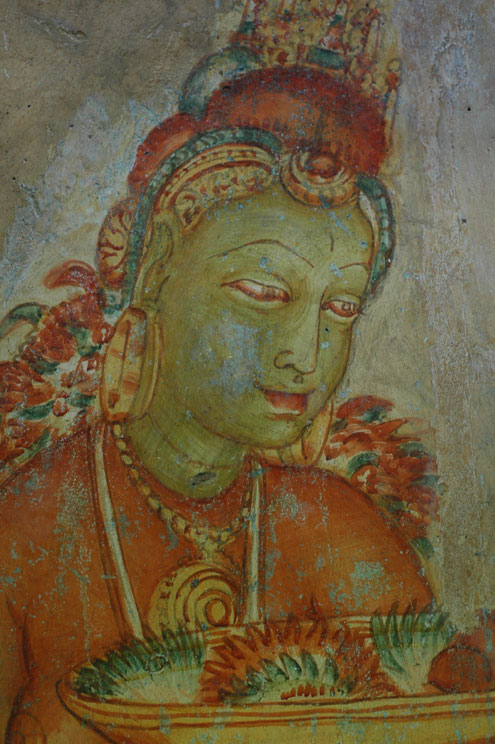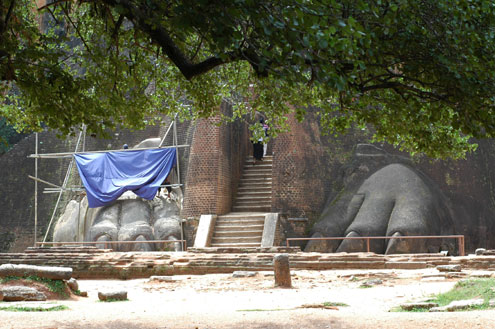|
|
Sigiriya Rock. The reddish band across the centre is called the Mirror Wall, a section of polished plaster made from, according to the Rough Guide to Sri Lanka "lime, egg white, beeswax and wild honey."
|
The Mirror Wall up close, with a piece of extremely old graffiti. The wall is covered in graffiti dating back all the way to the 7th century. Much of the writing records visitors' thoughts on Sigiriya and particularly the Sigiriya Damsels, pictured below. I wish I could read Sinhalese script, so that I could decipher some of the older comments and poetry!
|
|
|
A Sigiriya Damsel. These frescoes cover a section of rock face to the right of the Mirror Wall. They're in a sort of shallow cave, and flash photography is not allowed. These girlies were painted in the fifth century, and according to Rough Guide to Sri Lanka, they are "the only non-religious paintings to have survived from ancient Sri Lanka."
|
Another of the lovely damsels. There used to be approximately 500 damsels, but now there are only 21 (not all are on public display.) Back in 1967, some idiot vandalized a number of them. I hope he fell off the cliff face after doing so.
|
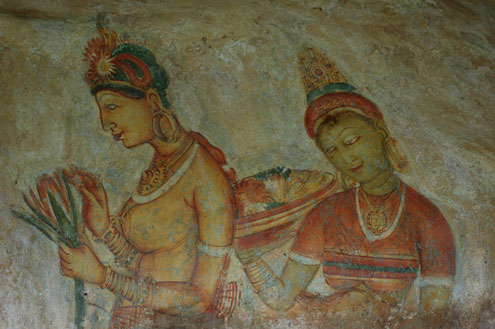 |
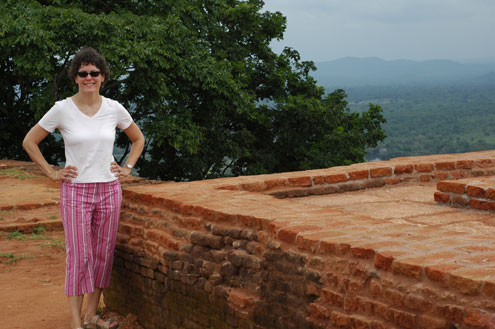 |
More Sigiriya beauties. There are some interesting appendages on some of the girls. One damsel has three nipples while another has three hands. I read this in the Rough Guide, then saw it for myself. Just makes me wonder what the artist was thinking at the time! Wishful thinking on the extra nipple, perhaps.
|
An Abbotsford beauty. HAHAHA! I slay myself. Anyway, I included this shot to prove that a) I made it up the bazillion steps to the top Sigiriya Rock, and b) I didn't wear that godforsaken red t-shirt every day of my trip. Fortunately, light pink doesn't show unsightly sweat stains very well. PS: Birkenstocks rock. I don't care if they make me look granola-y. And every day is a bad hair day when you don't have a hair dryer handy.
|
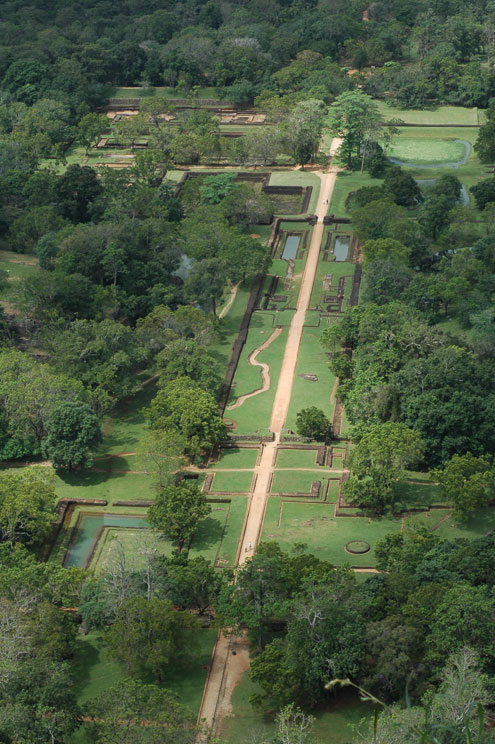 |
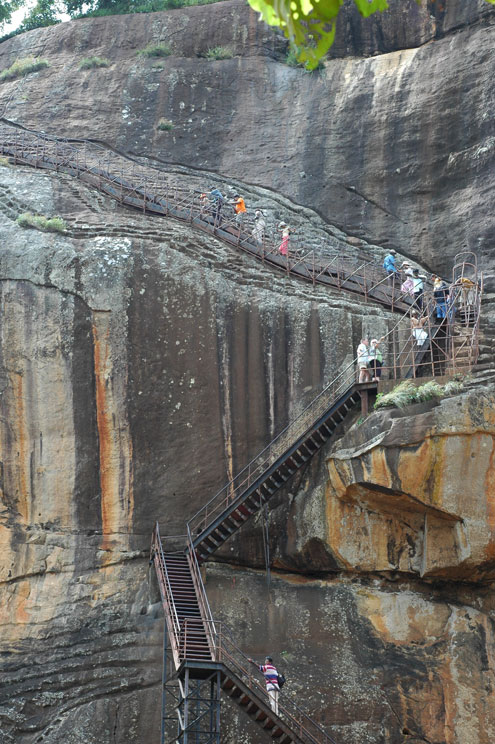 |
The really mind-blowing thing is that we climbed frigging stairs to get high enough to take this shot that looks like it was taken by a helicopter. Many thanks to Wendy "Whistle Blower" Halliwell, our most excellent BOOT CAMP aerobics class instructor, who unknowingly prepared us for this brutal climb in the 30 deg C+ heat and humidity. We lived because of you. We are not worthy, we are not worthy.... Yes, the climb up Adam's Peak, with 4800 steps, is surely worse, but this was no picnic.
Below are the water gardens of Sigiriya.
|
I would love to know how many out-of-shape, chain-smoking middle-aged white tourists succumb to coronaries on these steps each year! And how long does it take to carry their bodies down on stretchers? Or do they just land a helicopter on the ruins and fly them off to a hospital? This is just the last section of stairs that leads from the Lion Platform to the very top of the rock. More on the Lion below.
|
|
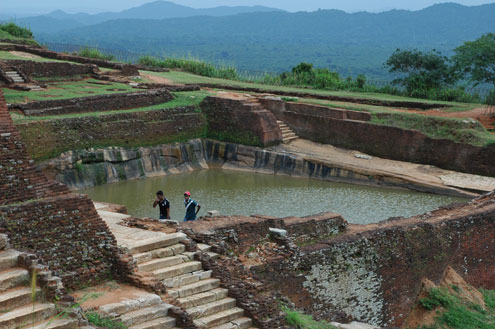 |
The base of the Lion Platform, which is undergoing some work. This area is just below the summit; the staircase from it is featured in the previous photo. There used to be an enormous lion statue here, but unfortunately the head fell off a long time ago, and only the paws remain. Lions are an important symbol in Sri Lanka, and indeed, a lion is featured on the national flag. |
The palace pool. I was sorely tempted to jump in after the long, hot hike up! The Rough Guide says that "the water was channelled to the summit using an ingenious hydraulic system powered by windmills." I also heard that there was some sort of underwater spring up there.
|
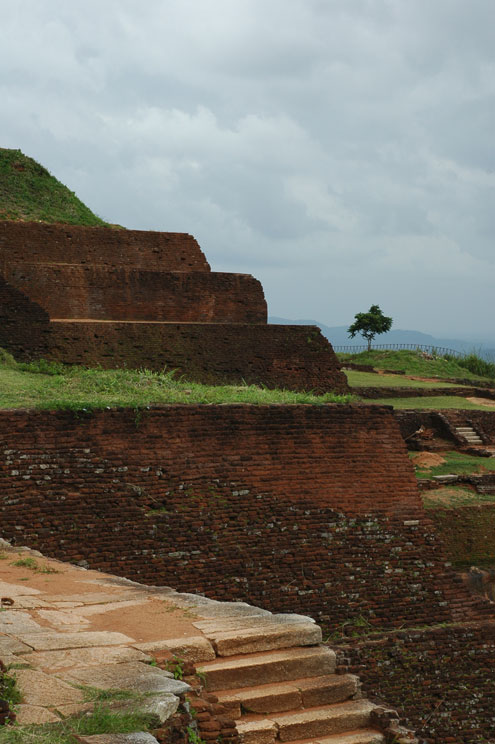 |
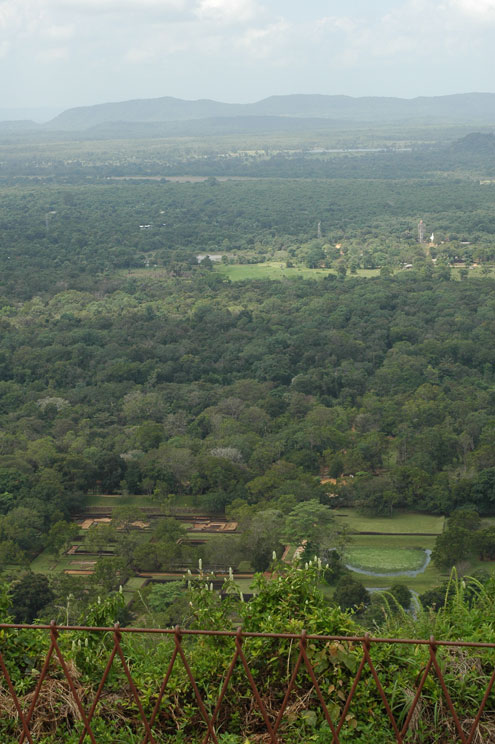 |
| More of the palace ruins, which are really just the foundations. |
A view from the top. |
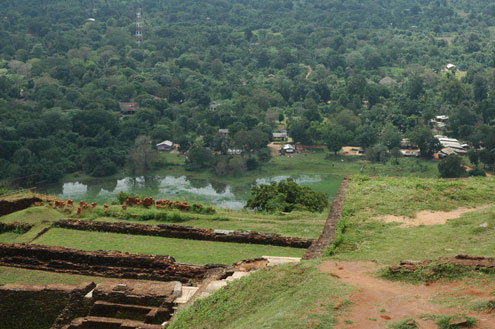 |
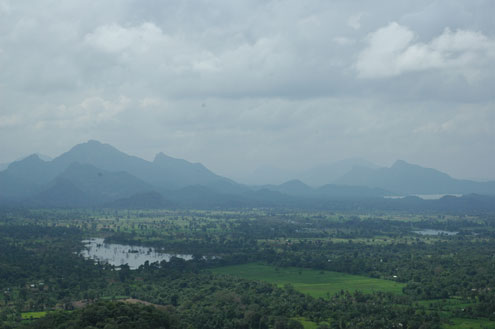 |
| Another view from the top, with some of the palace ruins in the foreground. |
Sri Lanka can be so very beautiful. |
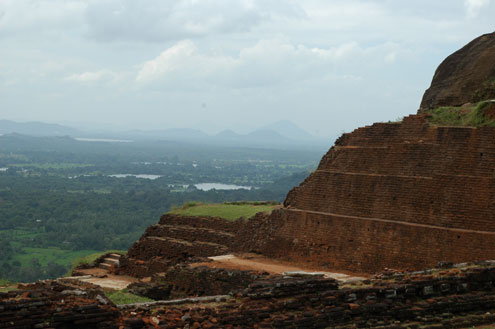 |
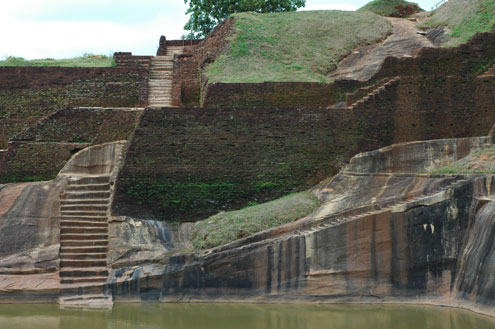 |
| More ruins and another view. |
Steps down to the palace pool. |
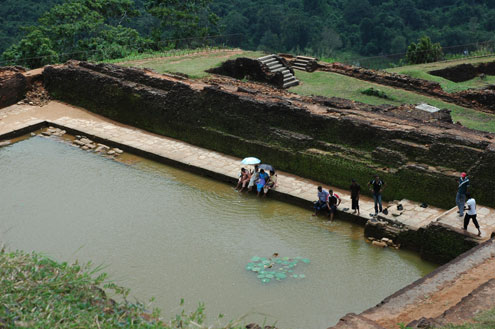 |
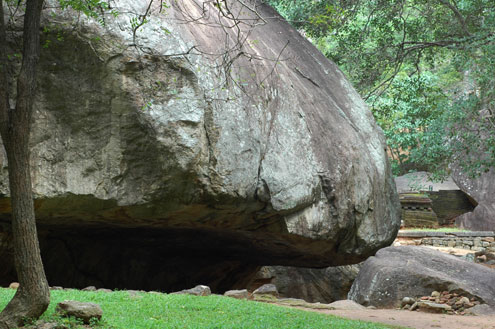 |
| Local tourists cooling their tootsies in the king's pool. |
Back at the bottom, we have part of the Cobra Hood Cave, so named for its resemblance to a cobra. I thought this part looked like a cobra, but apparently it's the other side that is known for its snake-like qualities.
|
|
|
| All photos and text copyright Natalie Rowe 2008 - Stealing brings bad karma. Don't make me set my lawyer-husband upon you! |

